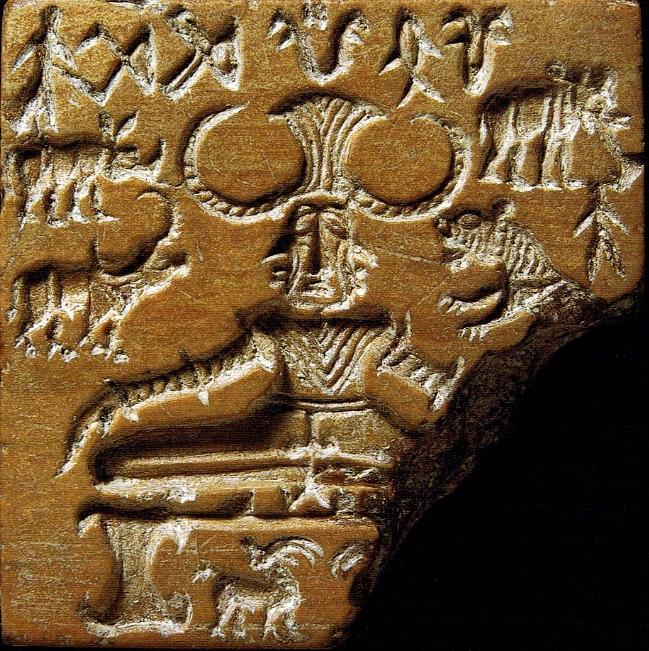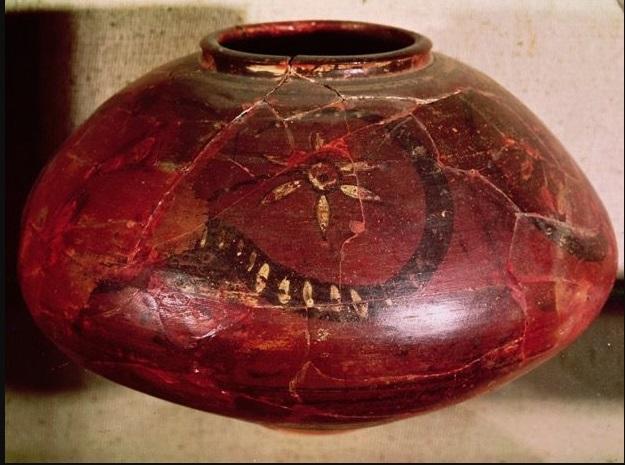Indian Architecture:-
A civilisation as old as India is bound to have a very long and immersive architectural history. The story of Indian art and architecture is a story of evolution. From the ancient Harappa valley civilisation to the British rule, the buildings and sculptures have a narrative of their own. The emergence and decay of great empires, the invasion of foreign rulers who gradually became indigenous, the confluence of different cultures and styles, etc. are all reflected in the evolution of Indian architecture and sculpture.

Harrapan Art & Architecture
A flourishing civilisation on the banks of the river Indus in the second half of the third millennium BCE and spread across large parts of North-western and Western India. This is what we know as Harappan civilisation or Indus Valley civilisation. Harappa and Mohenjo-daro– the two major sites of this civilisation – are among the earliest and finest examples of urban civic planning. The planned network of roads, houses and drainage systems indicate the planning and engineering skills that developed during those times.
The world’s Largest Museum Of Harappan Culture Is Coming Up In Rakhigarhi, Haryana
Some Of The Important Sites And Their Archaeological Finds:-
- Harappa – 2 row of six granaries with big platform, stone symbol of lingam and yoni, mother goddess figure, wheat and barley in wooden mortar, dice, copper scale and mirror. Moreover, sculpture of dog chasing a deer in bronze metal, and a red sand stone male torso have been excavated.
- Mohenjo-daro – the citadel, the great bath, the great granary, post cremation burial, sculpture of bearded priest, the famous bronze statue of the Dancing Girl and Pashupati seal.
- Dholavira in Gujarat – giant water reservoir, unique water harnessing system, stadium, dams and embankments, inscription comprising 10 large sized signs like an advertisement board.
- Lothal (Manchester of Indus Valley civilisation) in Gujarat – important site for naval trade, had a Dockyard, practice of burial of cremated remains, rice husk, fire altars, painted jar, modern day chess, terracotta figure of horse and ship, instruments for measuring 45, 90 and 180 degree angles, practice of burial of cremated remains.
- Rakhigarhi – Granary, cemetery, drains, terracotta bricks have been found.
- Ropar – Dog buried with human oval pit burials, copper axe.
- Balathal and Kalibangan in Rajasthan – bangle factory, toy carts, bones of camel, decorated bricks, citadel and lower town, Fire altar.
- Surkotada in Gujarat – first actual remains of the horse bones.
- Banawali in Haryana on the dried-up Saraswati river – toy plough, barley grains, lapis lazuli, fire altars oval shaped settlement, only city with radial streets.
- Alamgirpur in Meerut– Eastern most site of IVC. Major findings are broken blade made of copper, ceramic items and Impression of a cloth on a trough.
- Mehrgarh – Pottery, copper tools have been found.
Architecture in Harappan Civilisation
- The towns were laid out in a rectangular grid pattern. The roads ran in north-south and east-west direction and cut each other at right angles.
- Mainly three types of buildings have been found in the excavation sites – dwelling houses, public buildings and public baths. The Harappans used burnt mud bricks of standardised dimensions for the purpose of construction. Many layers of well-baked brick were
laid out and then joined together using gypsum mortar. - The city was divided into two parts–An upraised citadel and the lower-part of the city. An upraised citadel in the western part was used for constructing buildings of large dimensions, such as granaries, administrative buildings, pillared halls and courtyard.
Some of the buildings in the citadel might have been the residence of
the rulers and aristocrats. - The granaries were intelligently designed with strategic air ducts and raised platforms which helped in storage of grains and protecting them from pests.
- Public baths were very prevalent, which indicate the importance of ritualistic cleansing in their culture. The most famous one is ‘Great Bath’ excavated in ‘Mohenjadaro’.
- In the lower part of the city, small one-roomed houses have been found which might have been used as quarters by the working class people.
- Hygiene was very essential in town planning as can be observed through presence of a drainage system, cesspits.

Sculptures of Harappan Civilisation:-
Seals:-
Shape of most seals were square, it was found that triangular, rectangular and circular seals were also used. Steatite was used in making most of the seals but agate, chert, copper, faience and terracotta seals have also been found. Some instances of copper, gold and ivory seals have also been found.
Most seals have inscriptions in a pictographic script that is yet to be deciphered. The script was written mostly from right to left, but, bi-directional writing style i.e right to left on one line and left to right on another line has also been found. Animal impressions were also there most common one’s were unicorn, humped bull, rhinoceros, tiger, elephant, buffalo, bison, goat, markour, ibex, crocodile, etc. Seals were primarily used for trade, commerce communication and amulets. Ex:- Pashupati Seal, Unicorn seal

Bronze figures:
They were made using “lost wax technique” or “Cire Perdue”. Ex:- Dancing Girl, Bronze Bull of Kalinga etc.

The Dancing Girl is the world’s oldest bronze sculpture. Found in Mohenjo-daro, this four inch figure depicts a naked girl wearing only ornaments, which include bangles in the left arm, and amulet and bracelet on the right arm. She stands in a ‘tribhanga’ dancing posture with the right hand on her hip.
Terracotta:-
It refers to fire baked clay for making sculptures. Compared to the bronze figures, the terracotta sculptures are less in number and crude in shape and form. They were made using pinching method and have been found mostly in the sites of Gujarat and Kalibangan. Ex:- Mother Goddess.

Pottery:-
It is of two kinds – plain pottery and painted pottery. The painted pottery is also known as Red and Black pottery as it used red colour to paint the background and glossy black paint was used to draw designs and figures on the red background. Trees, birds, animal figures and geometrical patterns were the recurring themes of the paintings.
Purpose:-
- Plain pottery was used for household purposes, mainly storage of grains and water.
- Miniature vessels, generally less than half an inch in size, were used for decorative purposes. They are so marvellously crafted, even now they evoke awe.
- Some of the potteries were perforated – with a large hole in the bottom and small holes across the sides. They might have been used for straining liquor.


Ornaments:
A large variety of materials, from precious metals and gemstones to bones and even baked clay, were used to make ornaments. Both men and women wore ornaments like necklaces, fillets, armlets and finger rings. Girdles, earrings and anklets were worn only by women. For fabric, the Harappans used cotton and wool, which were spun by rich and poor alike. Spindles and whorls were made from expensive faience as well as cheap clay.

The bust of the bearded priest is one of the excellent examples of stone figures found in the Indus Valley civilisation. It is the figure of a bearded man, draped in a shawl with trefoil patterns. The eyes are elongated, and half closed as in meditation. The figure has an armlet on the right hand and a plain woven fillet across the head.

The red sandstone figure of a male torso is another specimen of rock sculpture. The torso has a frontal posture with well baked shoulders and a prominent abdomen. There are socket holes in the neck and shoulders, probably for the attachment of head and arms.

You May Also Read:-
Find More General Studies News Here



 Indian Olympic Medal Winners List Till N...
Indian Olympic Medal Winners List Till N...
 Who is the Inventor of the Gramophone?
Who is the Inventor of the Gramophone?
 HS Dhaliwal Appointed New DGP Of Andaman...
HS Dhaliwal Appointed New DGP Of Andaman...
